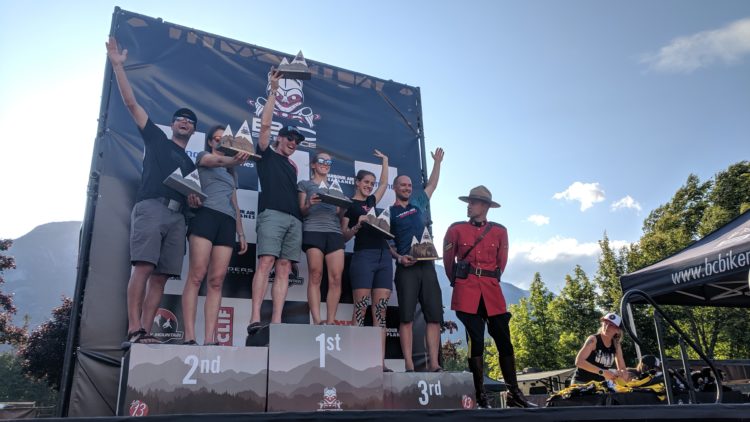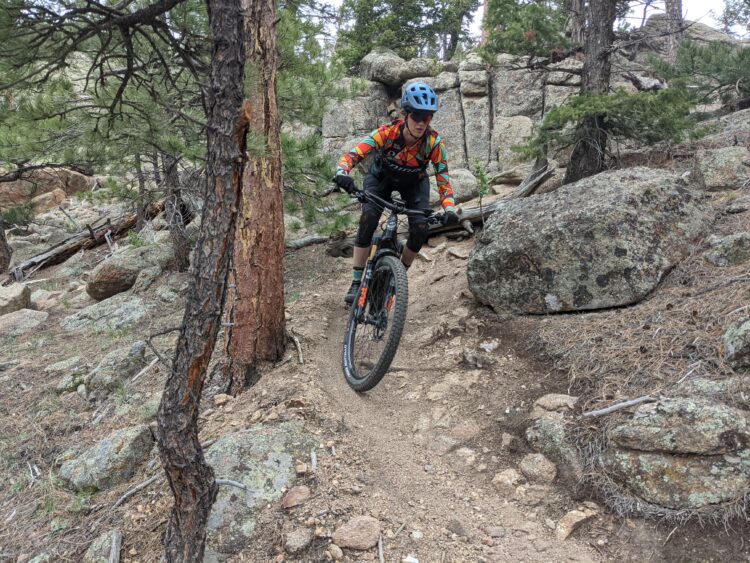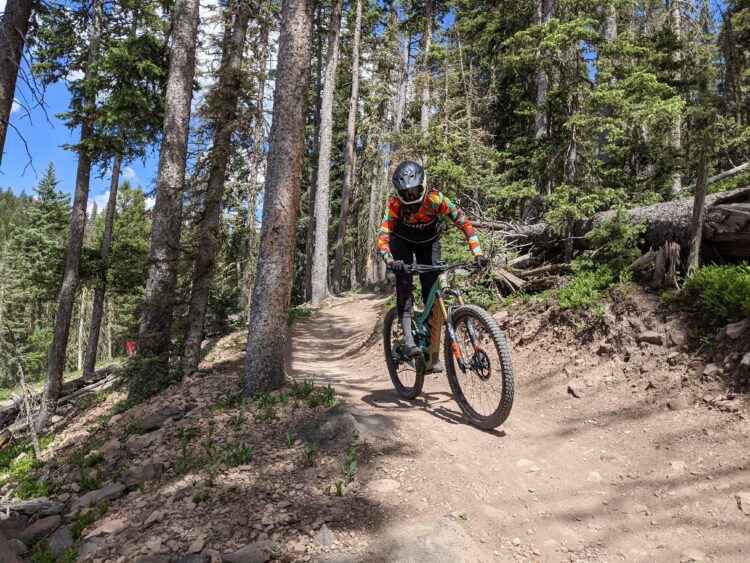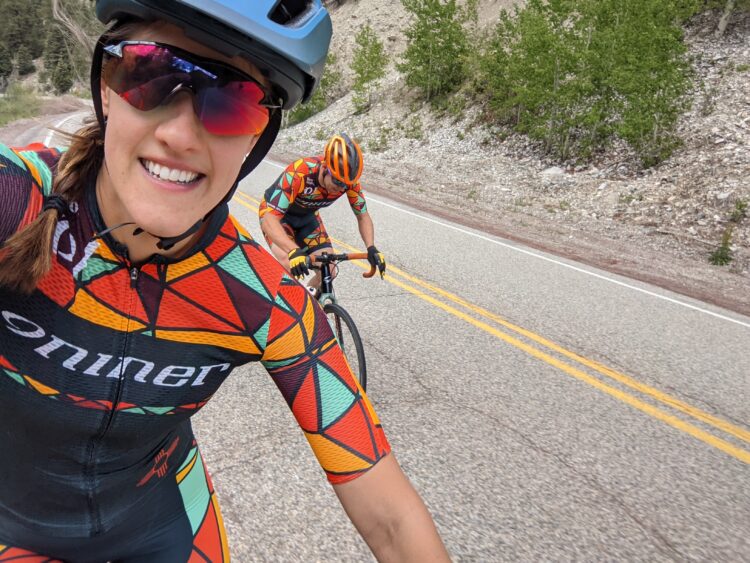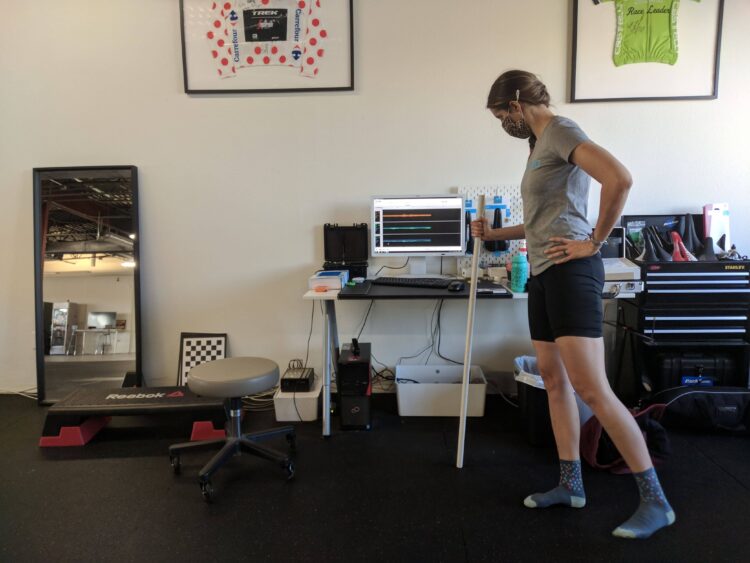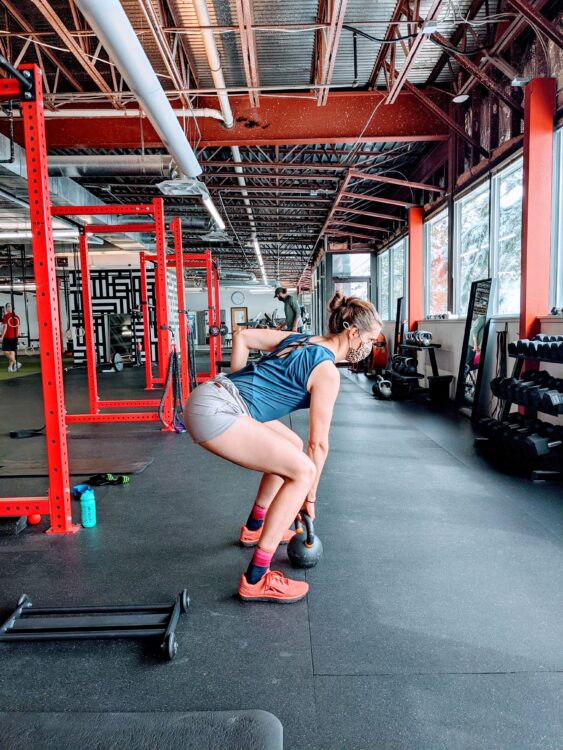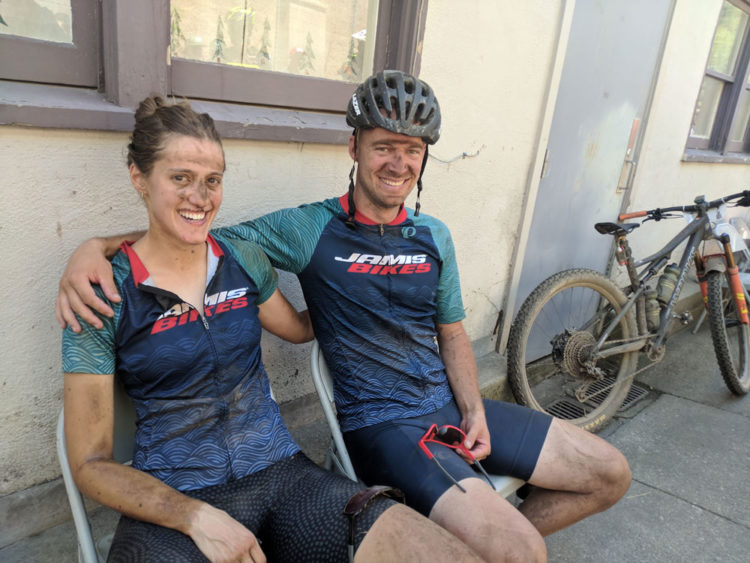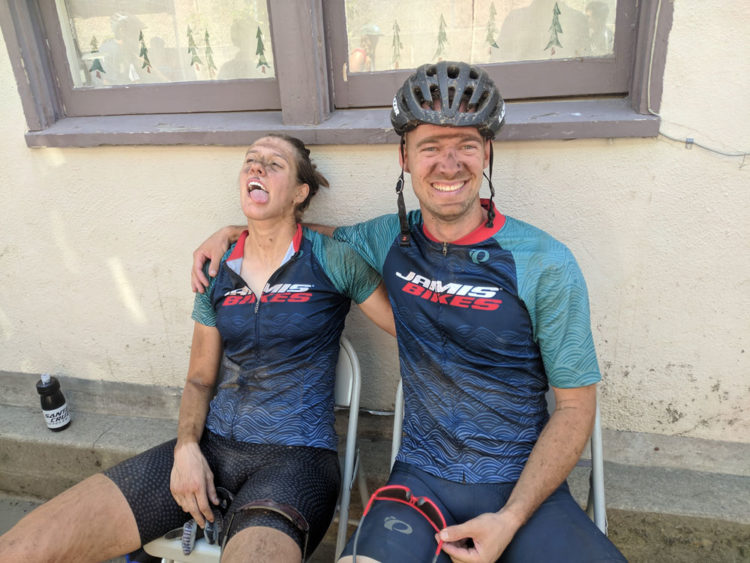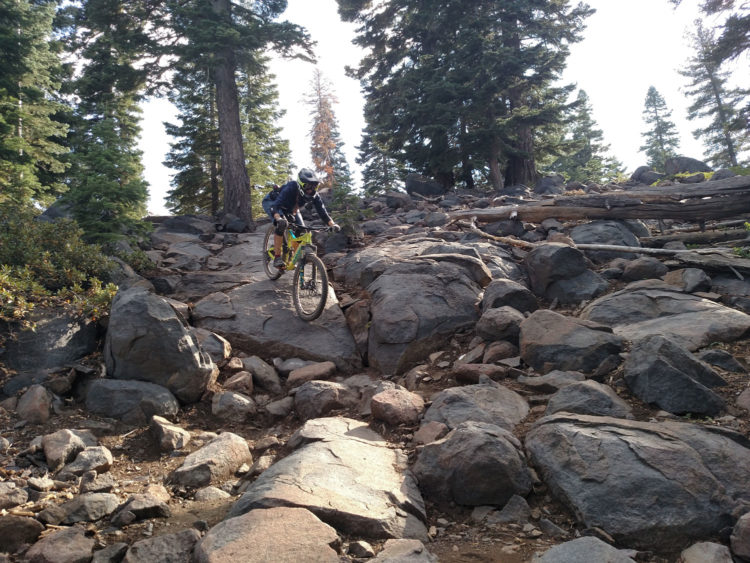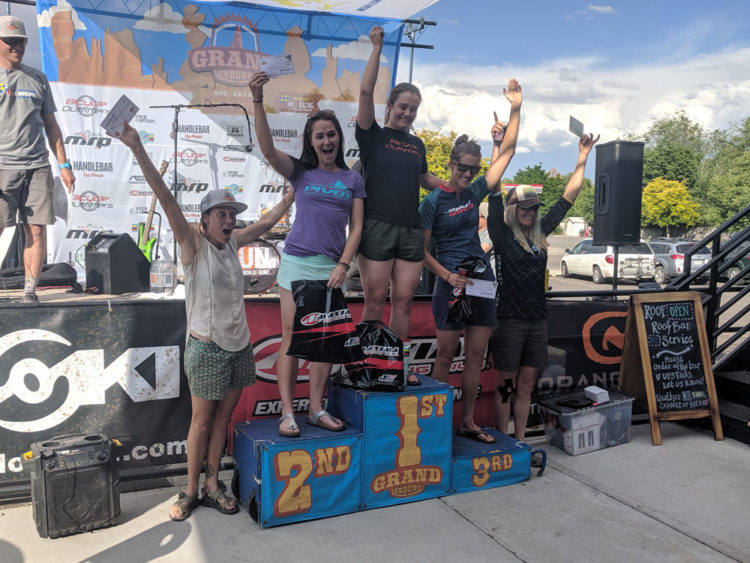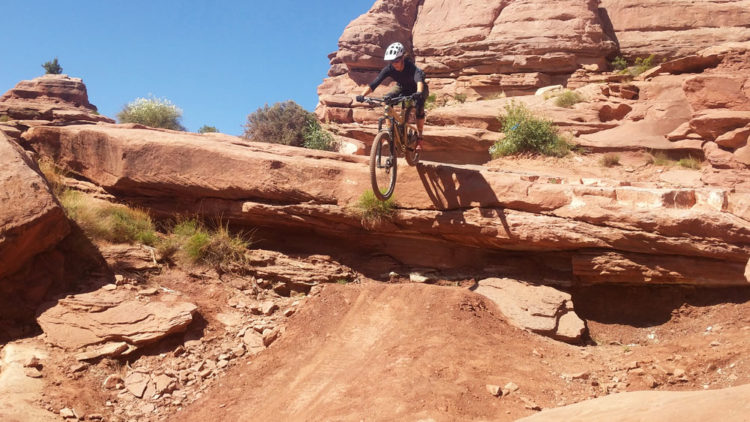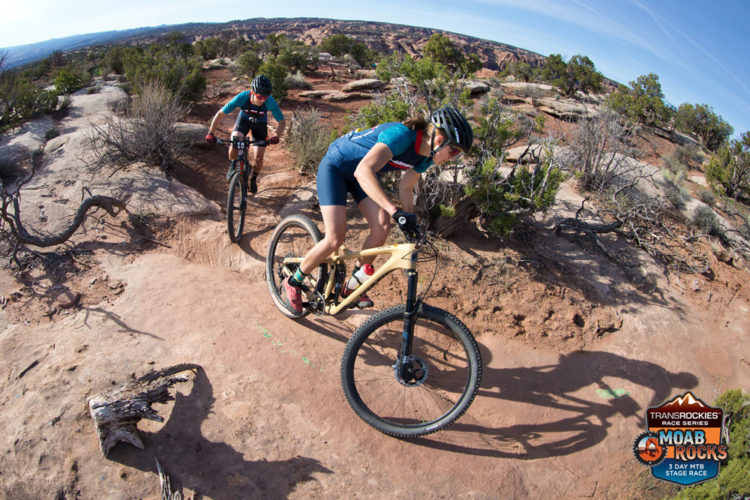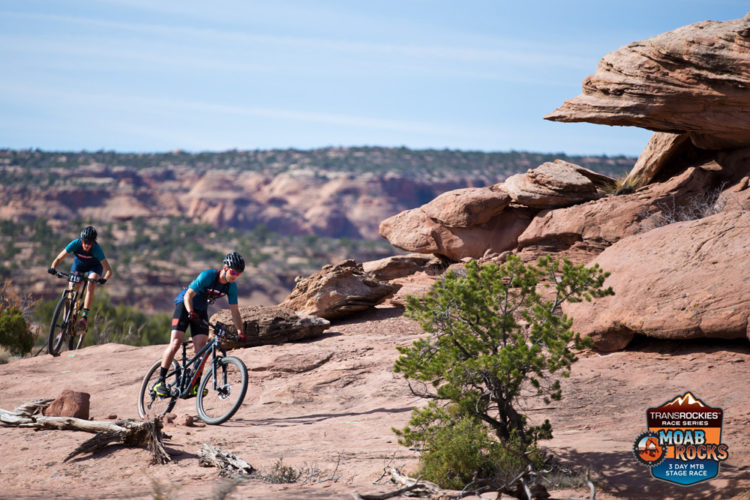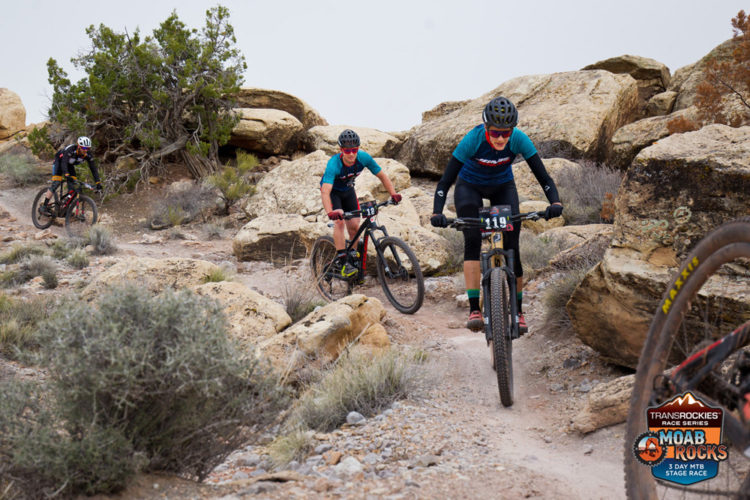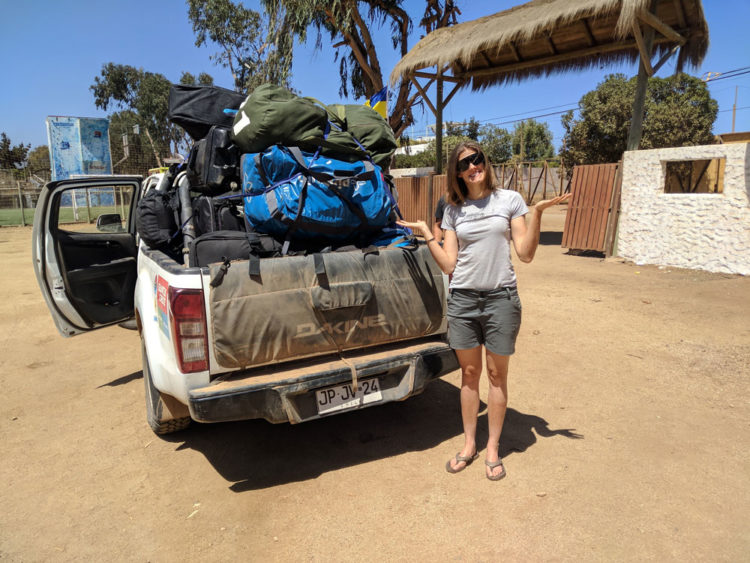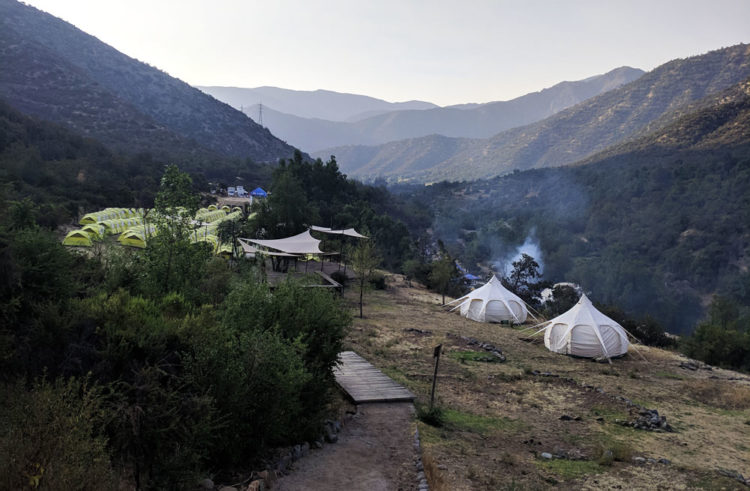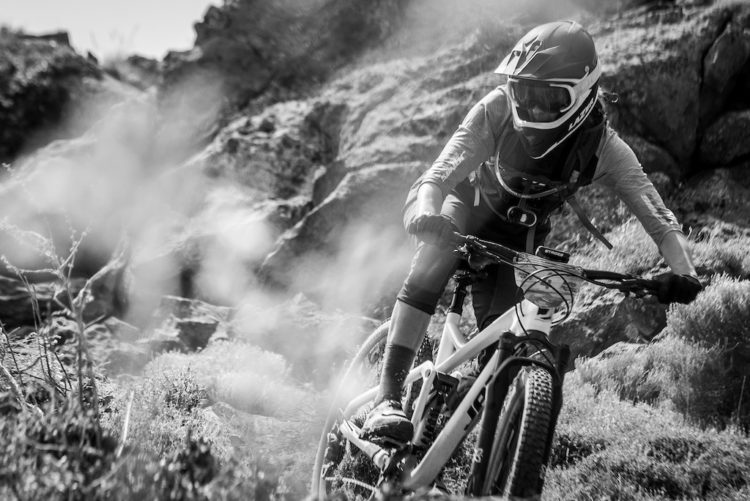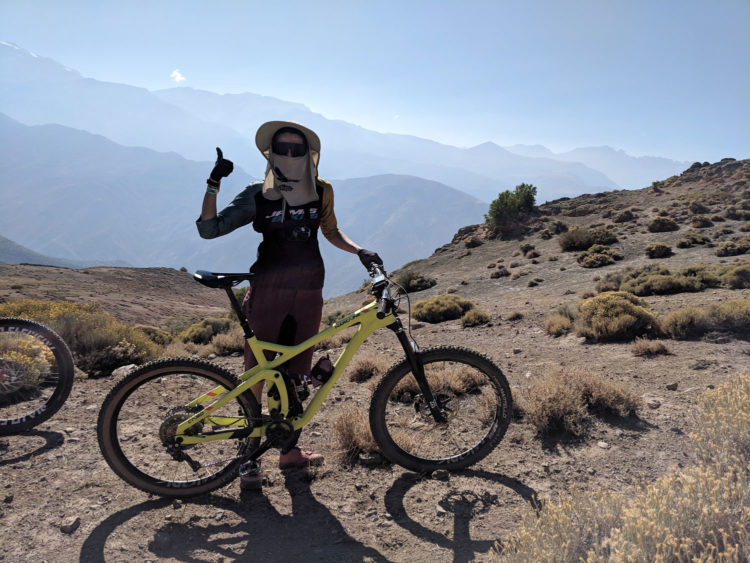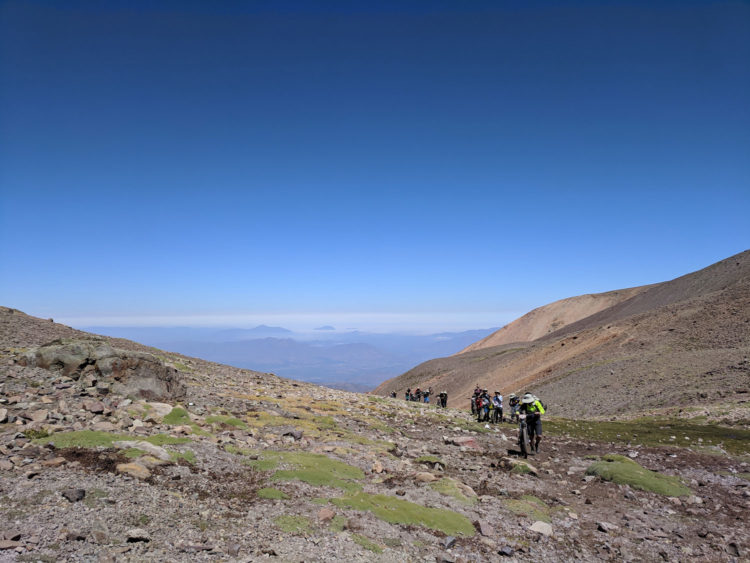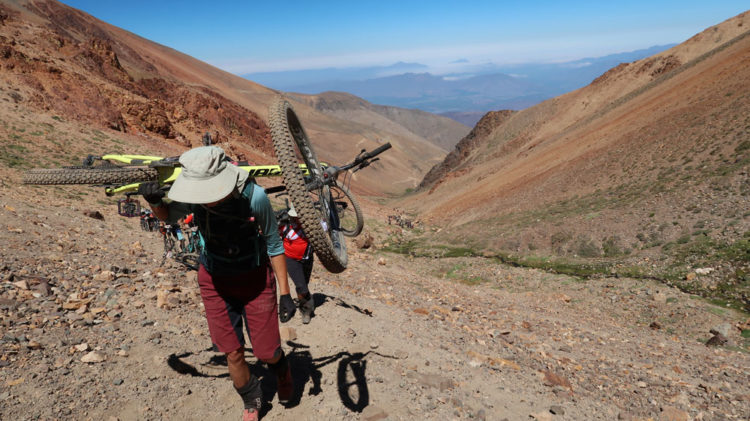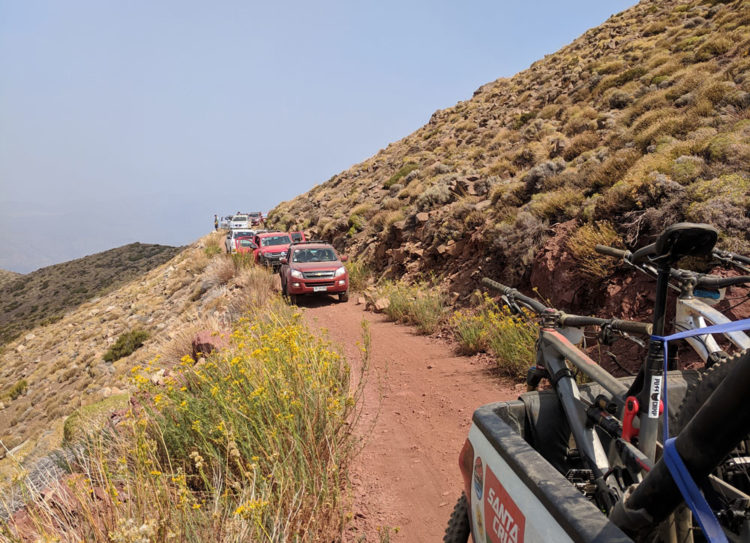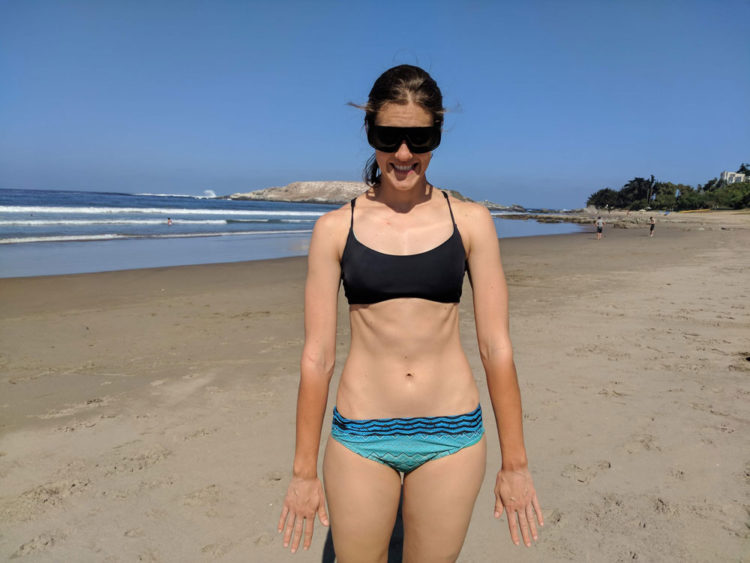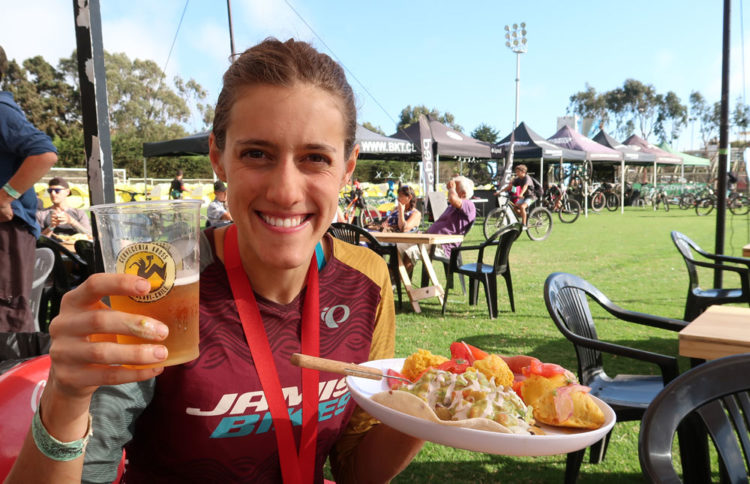7 mini essays adapted from my BC Bike Race instagram posts and formatted for this blog
1. A week of contrasts
After 7 days of racing, each day has bled together in memory — deep forests, rock slabs, soul-crushing climbs, pain coupled with a deep sense of wonder, the sense of blindness going from bright light into the darkest woods — leaving a stark sense of great contrast.
THE GOOD – I did it. We did it. Macky and I finished on the podium of the mixed duo category every day and finished third overall. We couldn’t possibly have expected any more of ourselves and that is incredibly gratifying. We worked together well as a team and had so much fun rallying descents and digging deep.
THE BAD – two mechanicals, both inconveniently at the beginning of stages, left us hemorrhaging time and getting passed by 200+ people. You can’t possibly expect to get through a seven day race without some bad luck, but the timing on these was frustrating, as it left us fighting upstream past hundreds of racers on two of seven days. The first time we rallied. The second time I broke mentally and cried into my already fogged up glasses for the next 20k.
THE UGLY – I expected this is to hurt but I did not expect both my knees to flare up (after over a year pain free). I also did not expect to get sick on day four and race over half of this race with a nasty cold. The hardest part was neither the pain nor the sickness but rather the striking contrast of expectations to reality.
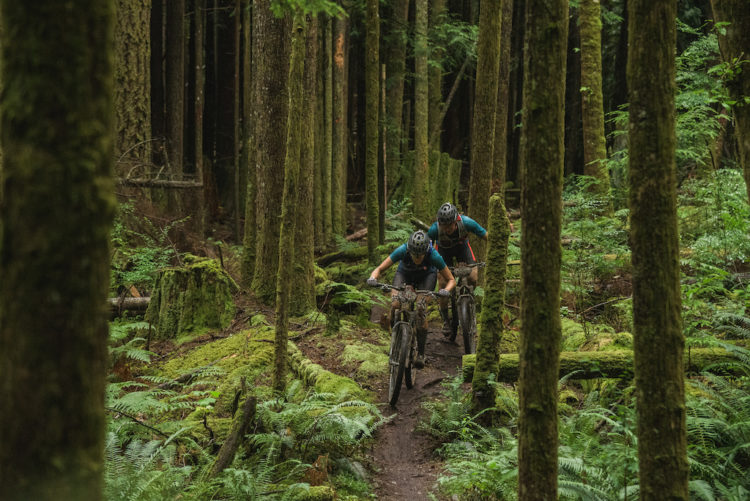
Photo: Dave Silver
2. The ice cream is free and so is the pain
Can you talk about a seven day mountain bike race without taking about pain? I mean, that is kind of the point, right? Right? As athletes there are certain kinds of pain we seek out by, say, signing up for a race like this. And then there are other kinds of pain that we flee from, that petrify us, not perhaps because of how much it hurts but rather because of what we fear it says. About us. About the future. My knee pain is the second kind of pain. I didn’t sign up for it, and the problem isn’t the pain but what it screams at me when I let it speak.
*You aren’t enough. You weren’t ready for this. You thought you had made progress but you were wrong. You are so far from being the athlete you want to be.*
This week, I ignored that voice. I held myself together with @rocktape and ice packs and a whispered mantra “IT’S ONLY PAIN, IT’S ONLY PAIN.” Because, while I am afraid of failure and being kept away from doing what I love, of not making progress, of not meeting my goals – I am not afraid of pain.
And it was only pain. I didn’t blow up my knees. Three days of rest and they are fine again. I have made progress, just perhaps, not quite enough progress to climb 4000+ feet a day for seven days in a row pain-free. (Which now that you mention, sounds like an insane thing to expect).
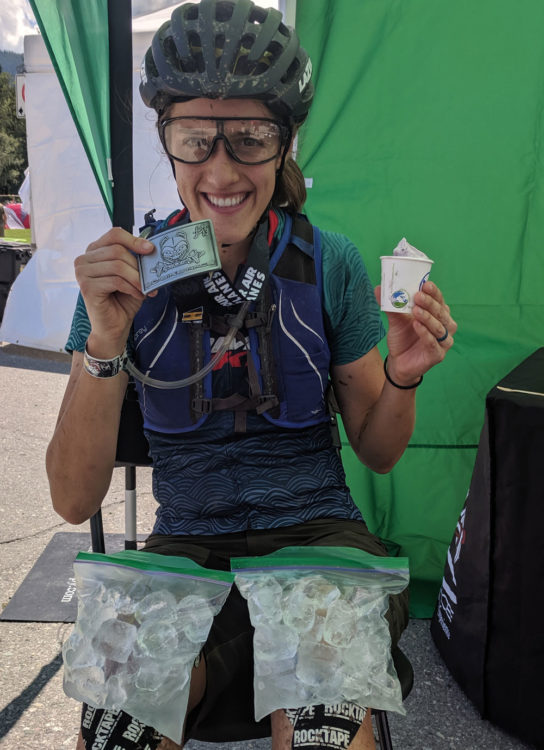
3. Turn your liabilities into assets (and vice versa)
Wet roots. My nemesis. Or not? Trying XC racing this year has turned my skillset on its head. In enduro racing, I excelled at physical stages and long days. I was “fit.” On the flipside, I struggled with more technical sections, jumps, and, of course, Anything Wet. This gets capital letters because I have always thought of myself as a terrible wet rider. And not without justification. I live in New Mexico. It is almost never wet. The last time I raced in BC (before this past week), was the 2015 Crankworx EWS in Whistler, where it rained two inches between practice and race and I tore my hamstring in the first corner of the first stage. That was not a good day.
But it’s funny how our identities — those things we cling to and say we are GOOD and BAD at — are so determined by the lanes we are in. In enduro racing, I was fit. In XC racing, I get passed by an endless stream of riders on the climbs. In enduro racing, wet roots made me come unglued. At BCBR, the days with the most slimy, nasty wet sections were my best. Because, by god, while these may be technical XC trails, they are not EWS whistler (or Rotorua or Tasmania or any of the other awful wet EWS races I subjected myself to over the past 5 years). Perspective allows you to redefine your weakenesses.
One of the guys we passed on a nasty, rooty downhill caught up to us on the next road climb. “Where are you from?” he asked. “You were hauling on those wet roots.”
“New Mexico,” I said. Perplexed, he shrugged and then sped past, leaving me to wonder if he was on an e-bike.
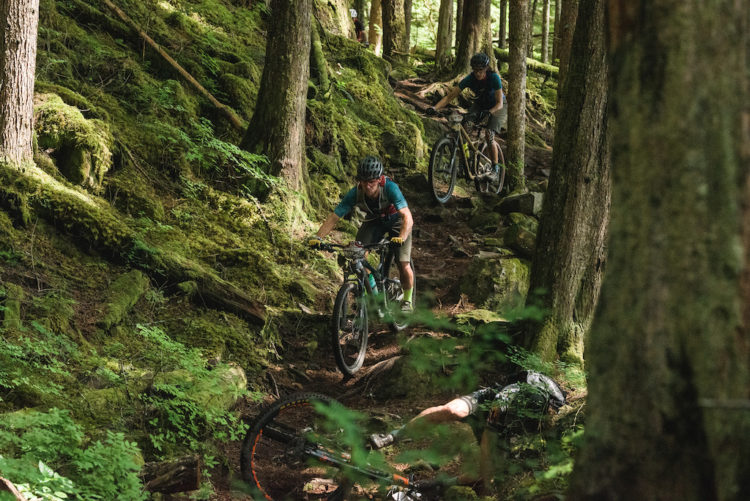
Look carefully… Photo: Dave Silver
4. You can do anything for seven days (or, the hardest day)
Day 4 was the day I wanted to quit, and this is the paragraph I didn’t want to write. I always knew I would finish this race (because finishing is, perhaps, my only real stand-out strength as an athlete), but when I woke up sick on the morning of Day 4 — four more days, the biggest days, yet to come — that was the hardest moment. Not because I didn’t think I could race sick, but because it just wasn’t how I wanted this week to go. It just wasn’t how I had imagined it. It just wasn’t *fair*. But life is not fair, and germs do not care that this is your biggest week of the year.
I have always been good at gutting things out. I didn’t learn that from being a professional athlete. In fact, if anything, my career as an athlete has taught me how to quit. Or rather, how to make calculated decisions for future gain. How to pull out of a workout when I can’t make my power numbers. How to pull out of a race when I’ve hurt myself and there is nothing to be gained. These were difficult lessons to learn, and this past week I ignored them all and returned to my instincts. Gut. Grit. Grind.
Because here’s a truth: you can do anything for seven days. It’s only a week. And you can race sick, and maybe even race well. Should you? Probably not. But you can. Oh yes, you can.
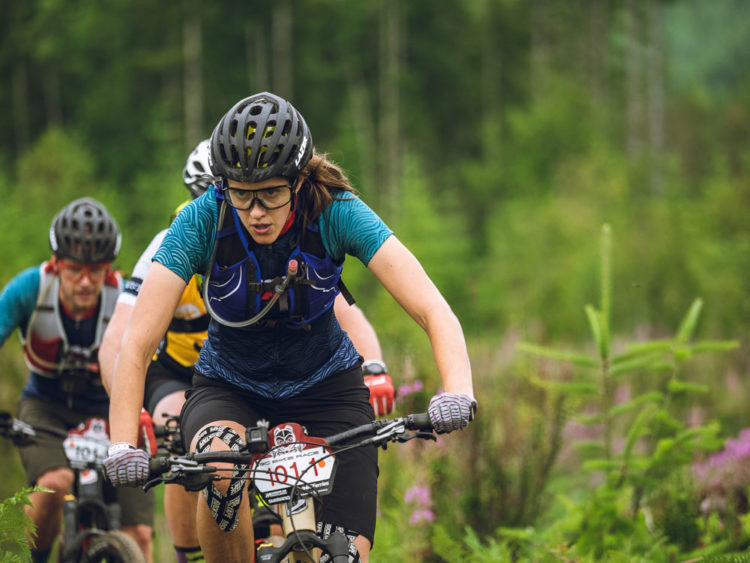
Photo: Lorenz Jimenez
5. Love and team
The previous essay is a bit of a downer, so let’s talk about a big positive. Now that I think about it, these snippets are a lot like stage racing, wildly careening from high to low, day to day. Someone told me this week that everyone seems to alternate from good day to bad day at a race like this and that proved true for me.
One thing that did remain constant was Macky’s support. When people asked me what our team strategy was — was one of us faster on the climbs? Did we split up? — the answer was basically “Macky is better than me at everything so he just hands me food.” It is a remarkably selfless thing to do, what Macky did this week.
Not many people would be willing or able to race for seven days at 75% their normal race pace (we’ve calculated this). I’m not sure I could. I think I would be resentful and antsy, but not Macky. Macky made sure I ate every 20 minutes. Macky pulled on every flat road (much to the joy and mild confusion of everyone around us). Macky stopped at aid stations and filled up my bottle and then sprinted to catch up. And on day 7, he started literally pushing me up some of the hills because all dignity is lost in love and war, and this was a bit of both.
People asked if we were going to need marriage counseling after this race, but the truth is we didn’t fight once, probably because I was too buried and he too kind. This week taught me to embrace a level of dependence I would usually refuse to accept, because if I didn’t, well, I was just wasting his time, and the sacrifice he had made. Perhaps dependence was the whole point of this team-racing thing.
So should you do a seven day race with your partner? Probably not, but I’m so glad I did.
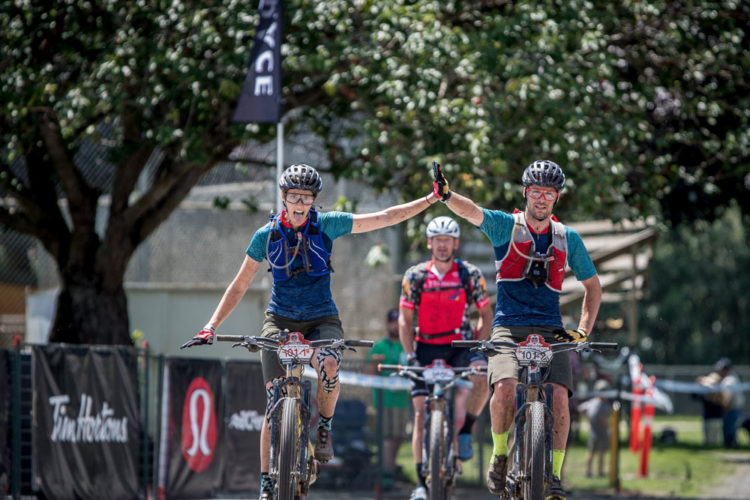
6. Stop and smell the roses… or race?
Can you truly appreciate the natural beauty of a place like British Columbia during a race? Can you really enjoy an amazing singletrack descent at hour three of an XC race?
The prevailing wisdom is that you can’t and there is some truth to that. I don’t have very clear memories of most of the trails we rode this past week. I also have, over the years, developed an impressive race tunnel vision that allows me to tune out spectators, (even the ones wearing giant inflatable dinosaur suits, even the Mounties in full regalia), as well as other racers and regrettably, course markings. This was a survival mechanism at EWS races, but seems a bit of a shame at a race like BCBR.
“Did you notice the Canadian Mounties?” Macky asked me after stage one.
Me: there were HORSES?!
Macky: no, just, nevermind…
But while I may not remember every trail, or even which day we raced what, and I may have missed the mariachi band and the hula dancers and very nearly missed the giant black bear hanging out of a tree right above my head on Day 7, I do feel like I experienced every trail I rode in the moment that I rode it. What I sacrificed in memories, I gained in full engagement in the present.
Perhaps this is my racer bias, but I can’t help but feel that this is how these trails want to be ridden. Full focus, full commitment. These trails don’t want you to stop for photos. They don’t want you to session. They want you to suffer for them, bleed for them, cramp for them, give up every last drop of energy to ride them the way they were meant to be ridden.
When you’re racing you don’t see every tree, you don’t have time to revel in the sweet, damp moss that covers the forest floor (I only know it was there thanks to photos like these), and yes, you miss a lot of views. But you don’t need to see, because you are feeling, and you don’t need another mountain view, because you are getting a deeper view into your soul.
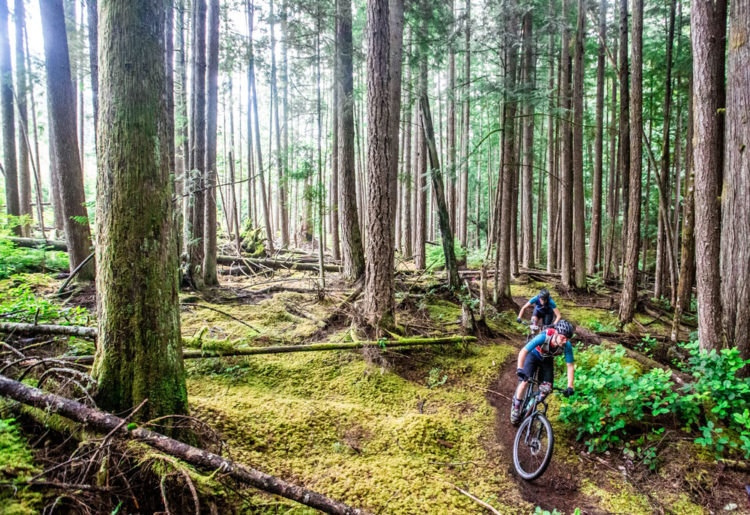
Photo: Todd Weselake
7. Hard work pays off
I signed up for BC Bike Race one year ago. 365 days before I would race it. Possibly the earliest I’ve ever committed to any sort of athletic endeavor. When I signed up, I had done one XC race in the past five years. I don’t remember my coach’s exact reaction, but I suspect it was something along the lines of “…..*long pause* …. you do realize we’re going to have to change some things?”
I will fully admit that when I signed up I had very little concept of just how hard BC Bike Race really is. I don’t think I understood that there are people who have raced XC for years who still think “hmm BCBR, I don’t know if I’m ready for that.” Let’s just say this: it was really f*cking hard.
But because it was so hard, it was good test of the work I have put in over those 365 days to transform myself into, if not an xc racer, at least a mountain biker capable of surviving 7 days of xc racing in British Columbia. And yes, we did have to make some changes to the training plan — longer rides, 40 min hill climb “intervals” (oof but I am so thankful we did these!), bigger training blocks — but those changes worked. In fact, they worked even better than I would have anticipated. I gained a huge amount of fitness this year without making any huge sacrifices to the kind of riding I like to do, and best yet, I feel like this is just the beginning.
The moral: if you want to tackle something big like BCBR, don’t be afraid to “change some things.” Start with small changes for big results. And get a smart coach like Mike who goes “so you wanna do one of the hardest xc races on the planet as your first xc race? Let’s see what we can do.”
